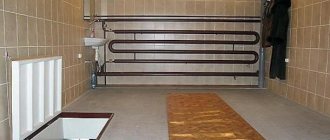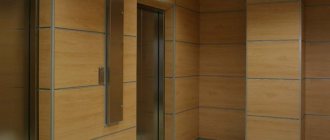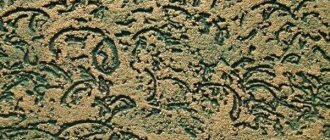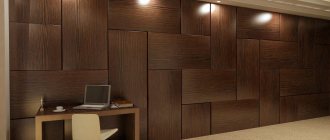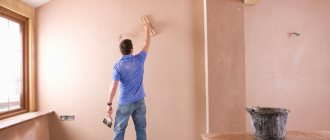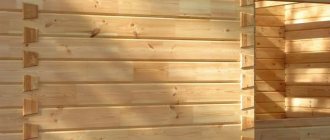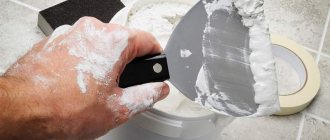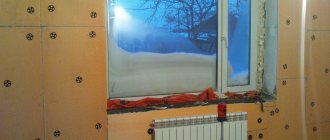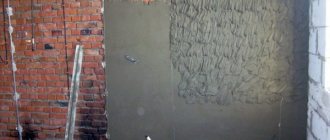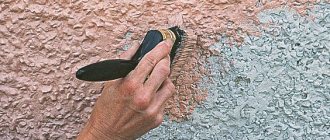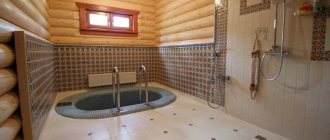Maksym
16688 1 11
Maksym November 2, 2016Specialization: country construction, apartment renovation, landscaping of a personal plot, installation and connection of utilities.
Own swimming pool in a suburban area.
Surely, many owners of private houses have more than once thought about building their own pool on their property. At the same time, everyone understands that this pleasure is not cheap, especially if you order its turnkey production from a contract construction organization. At the same time, with the right approach, any owner of his own home is quite capable of making a small pool on his own. At the same time, the purchase of materials and the cost of current construction costs will cost much less than the final price of the finished product.
The most difficult and important stage of self-construction is waterproofing and interior finishing of the pool bowl , so in this article I want to devote my attention to solving these two issues.
What characteristics should the material meet?
- Moisture resistance. Products with moisture resistance of 1% are considered the most effective. They do not leak and are designed for a long service life.
- Resistance to chemical reagents. The water in the pool is always cleaned using chemicals, so the decorative coating must easily withstand this.
- Resistant to mold and microorganisms. The heated liquid that fills the bowl of an artificial reservoir at the dacha is an excellent environment for the proliferation of microbes. The cladding material must be dense, but various pests will not be able to settle in it.
- Long-term operation. No one wants to regularly change the coating, especially since this is a rather expensive and labor-intensive process. Therefore, it is worth selecting only those materials that are designed for a long service life.
Finishing the pool with film
This is a special PVC coating, which is also called “liner”. Available in various shades, the front part is treated with acrylic for shine. The thickness of one layer does not exceed 1.5 mm, which will not affect the size of the pool bowl.
Advantages and disadvantages of the material
Among the advantages it is worth noting:
- The service life of many types of polyvinyl chloride reaches 20 years.
- Not afraid of direct sunlight and ultraviolet radiation.
- Can be repaired during use. During installation, an allowance is given that hides the subsidence of the tank.
- The coating is easy to maintain and does not require the use of specialized tools.
This type of pool wall finishing also has a number of unpleasant disadvantages:
- The material can be damaged by various sharp objects and then the film will have to be changed.
- PVC liner, like all plastics, is afraid of chlorine.
- Limited selection of colors.
Film installation stages
- The walls of the bowl are cleaned and then plastered.
- Special fastening strips are installed along the edges. They can be replaced with corners.
- The walls are lined with geotextile fabric, which prevents the formation of condensation.
- The liner is attached to the fasteners. The joints are treated with an industrial hair dryer.
- The resulting seams are covered with liquid-based plastic.
Method I. Plaster on mesh
If you use conventional sand-cement mixtures to finish the pool, they do not provide reliable adhesion. Therefore, first a steel plaster mesh is attached, and then the plaster is applied. This method also has its drawbacks. During the operation of the pool, sooner or later it is possible for water to penetrate, which will penetrate through the layer of plaster to the metal mesh, which will cause corrosion of the metal. In this case, the plaster may begin to fall off along with the tiles. Of course, an anti-corrosion coating is applied to the mesh, modern plasters are of very good quality, but still such an outcome is quite possible.
How can this problem be solved?
- To improve adhesion, make the concrete surface of the pool bowl a little rough.
- Use synthetic or glass plaster mesh rather than steel.
- Use waterproof plaster mixtures that have good adhesion to concrete.
Pool finishing with mosaic
This design consists of layers and slabs to which small squares of glass or ceramics are attached. Models are produced with a variety of patterns, in different shades and styling options.
Advantages of this cladding
- Beautiful, original design.
- Mosaic finishing forms and acts as additional waterproofing.
- You can use it to create a variety of paintings.
- Mosaic does not react in any way to household chemicals.
- Does not require complicated care.
- Suitable for arranging structures of unusual shape.
Stages of finishing a pool bowl with mosaics
- The walls of the tank are cleaned of construction dust and covered with plaster.
- A waterproofing coating is installed, which can be various materials - both liquid and plastic, roll.
- Special beacons are placed that specify the exact direction and installation methods. Apply tile adhesive that is resistant to moisture.
- Fasten the tiles by lightly tapping them with a spatula.
- The seams are then grouted with a special grout.
Pool bowl finishing
- PVC film for finishing the pool
- |
- Mosaic tiles for finishing the pool
- |
- Ceramic tiles for finishing the pool, coping stone
- |
- Building mixtures for finishing and waterproofing pools
- Show by:
- All goods
- Catalog type::
- Sort:
- Name
- Price ↑
- Bestsellers
- Customer ratings
- Date added
- In stock
- Geotextile (insulation) 350 g/m2 Eco Tex Avantex
90 rub.
Product added to cart
- Geotextile (insulation) 300 g/m2 AquaViva
110 rub.
Product added to cart
- Geotextile (insulation) 400 g/m2 Flagpool
190 rub.
Product added to cart
- Fastening strip 50 mm Flagpool
270 rub.
Product added to cart
- Internal/external mounting angle 50×30 mm Flagpool
340 rub.
Product added to cart
- Ceramic inner edge blue YC7A AquaViva
350 rub.
Product added to cart
- External ceramic edge blue AV7A-1 AquaViva
500 rub.
Product added to cart
- Ceramic external edge cobalt AquaViva
500 rub.
Product added to cart
- Mounting angle 50×50 mm Flagpool
540 rub.
Product added to cart
- Internal/external mounting angle 50×50 mm Renolit AG
570 rub.
Product added to cart
- Border tiles with handle and drain AquaViva
570 rub.
Product added to cart
- Tile and mosaic adhesive Keracrete MAPEI
600 rub.
Product added to cart
- PVC film for finishing ponds Negro Urater Cefil
610 rub.
Product added to cart
- Polymer grout additive Fugolastic MAPEI
610 rub.
Product added to cart
- Blue border tiles with grip and drain AquaViva
670 rub.
Product added to cart
- Curb tiles with handle AquaViva
740 rub.
Product added to cart
- Glass mosaic frieze Cristall W/B (white-blue) Aquaviva
760 rub.
Product added to cart
- Glass mosaic frieze “Greek” Cristall B/W (blue-white…
760 rub.
Product added to cart
- Coping stone Granitus Minus (Sable) Fabistone
790 rub.
Product added to cart
- Cleaner for epoxy residues “Diamant+”
850 rub.
Product added to cart
- Mosaic tile 20×20 Light Bahamas MIX
970 rub.
Product added to cart
- Mosaic tile 20×20 Dark Bahamas MIX
970 rub.
Product added to cart
- Mosaic tile 20×20 Violet Bahamas MIX
970 rub.
Product added to cart
- Mosaic tile 20×20 Light Jamaica MIX
970 rub.
Product added to cart
- Mosaic tile 20×20 Dark Jamaica MIX
970 rub.
Product added to cart
- Mosaic tile 20×20 Violet Jamaica MIX
970 rub.
Product added to cart
- Mosaic tile 20×20 NO-204N beige MIX
970 rub.
Product added to cart
- Mosaic tile 20×20 B2316N green MIX
970 rub.
Product added to cart
- Mosaic tile 20×20 white MIX
970 rub.
Product added to cart
- Glass mosaic frieze “Greek” U-71 Aquaviva
970 rub.
Product added to cart
- Geotextile (insulation) 350 g/m2 Eco Tex Avantex
0
When finishing a pool with PVC film, it is necessary to prepare the base, on which the finishing waterproofing coating will subsequently “lie.” The synthetic material geotextile (insulation) is used for this purpose. The price is for 1 m2. The roll width is 2 meters.
Product added to cart
90 rub.
- Geotextile (insulation) 300 g/m2 AquaViva
0
When finishing a pool with PVC film, it is necessary to prepare the base, on which the finishing waterproofing coating will subsequently “lie.” The synthetic material geotextile (insulation) is used for this purpose. AquaViva geotextiles are a high-strength fabric made of synthetic polymer fibers. The price is for 1 m2. The roll width is 2 meters.
Product added to cart
110 rub.
- Geotextile (insulation) 400 g/m2 Flagpool
0
When finishing a pool with PVC film, it is necessary to prepare the base, on which the finishing waterproofing coating will subsequently “lie.” The synthetic material geotextile (insulation) is used for this purpose. The price is for 1 m2. The roll width is 2 meters.
Product added to cart
190 rub.
- Fastening strip 50 mm Flagpool
0
Galvanized steel strip 50 mm wide, 2 m long, with a factory-welded PVC layer. Used for fastening PVC film to the edges of the pool edge. The price is indicated for 1 linear meter.
Product added to cart
270 rub.
- Internal/external mounting angle 50×30 mm Flagpool
0
Galvanized steel corner 50 x 30 mm wide, 2 m long, with a factory-welded PVC layer. Used for fastening PVC film to the edges of the pool edge. The price is indicated for 1 linear meter.
Product added to cart
340 rub.
- Ceramic inner edge blue YC7A AquaViva
0
Inner edge in blue Aquaviva YC7A. Used for joints and corners between pool walls.
Product added to cart
350 rub.
- External ceramic edge blue AV7A-1 AquaViva
0
Aquaviva AV7A-1 blue outer edge. Used for joints and corners between pool walls.
Product added to cart
500 rub.
- Ceramic external edge cobalt AquaViva
0
Aquaviva cobalt outer edge. Used for joints and corners between pool walls.
Product added to cart
500 rub.
- Mounting angle 50×50 mm Flagpool
0
Galvanized steel corner 50 x 50 mm wide, 2 m long, with a factory-welded PVC layer. Used for fastening PVC film to the edges of the pool edge. The price is indicated for 1 linear meter.
Product added to cart
540 rub.
- Internal/external mounting angle 50×50 mm Renolit AG
0
Galvanized steel corner 50 x 50 mm wide, 2 m long, with a factory-welded PVC layer. Used for fastening PVC film to the edges of the pool edge. The price is indicated for 1 linear meter.
Product added to cart
570 rub.
- Border tiles with handle and drain AquaViva
0
Border tiles with handrail and drain, ceramics with glaze, dimensions 240 x 115 x 30 mm.
Product added to cart
570 rub.
- Tile and mosaic adhesive Keracrete MAPEI
0
Keracrete MAPEI is a two-component adhesive designed for laying ceramic tiles, glass mosaics and stone. The drug has high adhesive characteristics and zero vertical slip.
Product added to cart
600 rub.
- PVC film for finishing ponds Negro Urater Cefil
0
Urater Cefil PVC pond film is ideal for outdoor use. It contains antioxidants and ultraviolet stabilizers. Area of application: protective cladding of roofs and waterproofing of ponds. The price is for 1 m2.
Product added to cart
610 rub.
- Polymer grout additive Fugolastic MAPEI
0
Fugolastic MAPEI is a liquid polymer additive for Keracolor mixtures.
Product added to cart
610 rub.
- Blue border tiles with grip and drain AquaViva
0
Blue border tiles with handrails, ceramics with glaze, dimensions 240 x 115 x 30 mm.
Product added to cart
670 rub.
- Curb tiles with handle AquaViva
0
Border tiles with handrails, ceramics with glaze, dimensions 240 x 115 x 30 mm.
Product added to cart
740 rub.
- Glass mosaic frieze Cristall W/B (white-blue) Aquaviva
0
Decorative border (frieze) made of frosted glass mosaic in white and blue Cristall Aquaviva. Price per linear meter.
Product added to cart
760 rub.
- Glass mosaic frieze “Greek” Cristall B/W (blue-white) Aquaviva
0
Decorative border (frieze) made of frosted glass mosaic in white and blue “Greek” Aquaviva Cristall. Price per linear meter.
Product added to cart
760 rub.
- Coping stone Granitus Minus (Sable) Fabistone
0
Granitus Minus (Sable) Fabistone is a premium class coping stone (tile) from the Portuguese manufacturer Fabistone. Possesses the physical and chemical properties of natural stone.
Product added to cart
790 rub.
- Cleaner for epoxy residues “Diamant+”
0
“Diamant+” is intended for cleaning all types of ceramic coatings, including porcelain stoneware, as well as mosaics, glass mosaics, and all types of natural stone from epoxy residues.
Product added to cart
850 rub.
- Mosaic tile 20×20 Light Bahamas MIX
0
Light Bahamas mosaic tiles are a mix of predominantly white and various shades of blue. Sheet size - 327 x 327 mm (on paper), 40 sheets in a box, 4.28 m2. Price per 1 m2.
Product added to cart
970 rub.
- Mosaic tile 20×20 Dark Bahamas MIX
0
Dark Bahamas mosaic tile is a mix of white and various shades of blue. Sheet size - 327 x 327 mm (on paper), 40 sheets in a box, 4.28 m2. Price per 1 m2.
Product added to cart
970 rub.
- Mosaic tile 20×20 Violet Bahamas MIX
0
Violet Bahamas mosaic tile is a mix of different shades of blue. Sheet size - 327 x 327 mm (on paper), 40 sheets in a box, 4.28 m2. Price per 1 m2.
Product added to cart
970 rub.
- Mosaic tile 20×20 Light Jamaica MIX
0
Light Jamaica mosaic tile is a mix of different shades of light blue. Sheet size - 327 x 327 mm (on paper), 40 sheets in a box, 4.28 m2. Price per 1 m2.
Product added to cart
970 rub.
- Mosaic tile 20×20 Dark Jamaica MIX
0
Dark Jamaica mosaic tile is a mix of light and dark shades of blue. Sheet size - 327 x 327 mm (on paper), 40 sheets in a box, 4.28 m2. Price per 1 m2.
Product added to cart
970 rub.
- Mosaic tile 20×20 Violet Jamaica MIX
0
Violet Jamaica mosaic tile is a mix of a dark background of various shades of blue. Sheet size - 327 x 327 mm (on paper), 40 sheets in a box, 4.28 m2. Price per 1 m2.
Product added to cart
970 rub.
- Mosaic tile 20×20 NO-204N beige MIX
0
Beige mosaic tile “Sahara” is a mix of various shades of brown and sand. Sheet size - 327 x 327 mm (on paper), 40 sheets in a box, 4.28 m2. Price per 1 m2.
Product added to cart
970 rub.
- Mosaic tile 20×20 B2316N green MIX
0
Green mosaic tile “Ocean” is a mix of various shades of green and blue. Sheet size - 327 x 327 mm (on paper), 40 sheets in a box, 4.28 m2. Price per 1 m2.
Product added to cart
970 rub.
- Mosaic tile 20×20 white MIX
0
Mosaic tiles are plain white. Sheet size - 327 x 327 mm (on paper), 40 sheets in a box, 4.28 m2. Price per 1 m2.
Product added to cart
970 rub.
- Glass mosaic frieze “Greek” U-71 Aquaviva
0
Decorative border (frieze) made of frosted glass mosaic in white and blue Aquaviva U-71. Price per linear meter. The box contains 20 sheets of 0.174 m long (3.48 m).
Product added to cart
970 rub.
- Pages:
- …
Main types of pool bowl finishing
The finishing of the pool is a very important aspect, on which the technology of constructing the bowl itself, as well as the type of embedded elements, depends. Therefore, to the question “How to decorate the pool?” you need to answer for yourself before starting its construction. So, what are the options for finishing a pool ? The most popular are PVC film and mosaic tiles.
PVC film (polyvinyl chloride)
This is a special film reinforced with polyester fiber with the addition of a stabilizer that protects it from ultraviolet radiation, as well as an acrylic layer applied to give a matte shine. PVC film is a very versatile material; it is convenient and economical due to the fact that its use does not require additional waterproofing.
Technology of finishing a pool with PVC film
First, metal corners or a strip with a similar PVC coating are nailed around the perimeter of the pool. The film coating is welded to them, in cuts, as far as the width of the roll allows. The sections are welded together with an overlap (the seams in a pool filled with water are almost invisible). The bottom is welded to the horizontal cuts. It turns out to be a solid bag that is not attached to the walls in any way. When the pool is filled with water, the film is stretched and a smooth and beautiful surface is obtained, tightly adjacent to the walls of the pool. A lining - geotextile (insulation) - is first laid under the film. This is a polymer fiber that serves as thermal insulation and a layer that hides the roughness of the bowl and slightly softens the bottom. Geotextiles are made from synthetic materials that are not subject to rotting. It is also called “synthetic felt”. All holes in the “film” pool for the skimmer, nozzles, spotlight, bottom drain, etc. must only be closed using flange connections. In other words, we can’t just make a hole in our film bag, otherwise water will start to go under the liner and bubbles will appear on the bottom or walls of the pool. Therefore, there are special models of embedded elements, which are called “under the film” or “universal”. The whole point is that the kit of these models includes clamping rings (flanges) with gaskets and bolts that secure them securely. Also, it should be said that finishing the pool with PVC film should be entrusted to a specialist. You need to correctly calculate the distance on the walls, bottom and steps so that after the water has accumulated, the film stretches beautifully and you are not left with folds, depressions or bubbles. In addition, welding the film requires a special hair dryer with various attachments and other consumables, which does not make sense to buy for one private pool.
Mosaic tiles
Tile means any material that does not absorb water. The technology for lining the pool bowl is the same in all cases; the main thing, I repeat, is that the lining material has low water permeability, otherwise it will peel off and fall off. Clay or ceramic tiles, which are sold in all plumbing stores, are not suitable for finishing a pool.
Technology of finishing a swimming pool with mosaic tiles
It is important to understand that the tile itself is a final, decorative finish that does not hold water in the pool! And the waterproofing holds it in place. Waterproofing is a special two-component acrylic-based composition that is applied to the plastered pool bowl in 2 or 3 layers. The result is a strong, elastic “crust” that holds water. In fact, after applying waterproofing, the pool can already be used, it just has a gray, ugly appearance. In order to decorate it, tiles are applied. Most often, a mosaic mix of various colors is used, although this is a matter of personal taste, imagination and financial capabilities. To lay the tiles, only special “underwater” glue is used, which does not absorb water and guarantees its reliable fixation. For grouting, antibacterial grout is used, designed specifically for swimming pools. Please note that we offer only professional pool construction chemicals. Most products sold in swimming pool supply stores are not suitable. For example, cement-based waterproofing is suitable for application in shower stalls, but not in swimming pools. Many people do not study this issue thoroughly, but simply buy what is cheaper. As a result, the pool leaks, and all work must be done again. And this is a significant loss of time, mood and money.
Pool tiling
Several types of material are used to decorate the walls of bowls:
- Porcelain products;
- Glass;
- Ceramic models.
All of them are processed at elevated temperatures, which prevents their premature destruction and allows them to withstand loads.
The advantages of this design
- Not afraid of chemicals.
- Easy to clean and does not require special maintenance.
- Abrasion resistant.
- Designed for long service life.
- A large selection of shades and patterns, it is possible to create beautiful paintings.
The only drawback is that if it breaks, the fragment falls out very quickly and the entire surface has to be replaced.
Stages of tiling a pool
- The walls of the bowl are leveled, sharp protrusions are removed.
- A waterproofing layer is installed.
- Guides are placed along which the layout is carried out.
- The tiles are attached to a special adhesive.
- The seams are sealed with waterproof grout.
Finishing the pool with stone
Only durable rocks that are resistant to various types of impacts are used. The most popular are marble and granite, but rubble and sandstone can also be used. Fungus and mold do not form on them, they are not afraid of direct sunlight. Designed for a long service life and do not lose their attractiveness for many years.
But they all require complex and specific maintenance, since they are destroyed over time when exposed to aggressive chemical compounds.
Features of material laying
The stone is installed in the same way as regular ceramic tiles. It only uses epoxy glue with good adhesion properties.
- The walls are leveled and plastered.
- Covered with a layer of waterproofing.
- Beacons are mounted on them for even laying.
- Each tile is installed with an adhesive.
- The seams are treated with grout.
Pool lining with polypropylene
Plastic sheets are used for finishing not so often, although they have good moisture resistance. The material is available in a greater number of shades, which allows you to design the bowls to your liking. It is not afraid of fungus and mold, which do not form on it and do not penetrate its structure.
But this type of finishing extremely does not like temperature changes and cannot remain without water, so it is installed only in indoor pools. When dry, it quickly deforms and warps.
Pool design in an extension
If the pool is located in an extension or even in a separate building, then it may not support the style of the house. A very pleasant and interesting solution is a swimming pool in the winter garden . Lots of glass, wood and living plants - you won’t want to leave such a pool, especially if there is a sauna in the next room, and a small bar counter and several sun loungers will appear near the pool.
From athinacottage.co.uk
Another option is to turn a separate pool room into a so-called “indoor beach” . Sand-colored tiles are used to finish the edges of the pool and the floors outside it. The glazed wall can be decorated with thematic painting (pseudo-stained glass), and the bowl itself can be decorated with blue film or tiles. Warm overhead lighting will create a sun effect. A few palm trees in tubs, a bright Hawaiian-style bar counter, sun loungers and perhaps even umbrellas - and even in the January frosts you will feel as if you are at a resort.
© David Hallam Ltd
Thus, when choosing a finishing option, you need to take into account the style, the desired effect and, of course, the features of the room. It is still advisable to use moisture-resistant materials, especially if the room is quite compact, and therefore when swimming, water will definitely get on the walls. It is better to make the floors in a room with a swimming pool heated by laying porcelain tiles with an anti-slip effect.
Even for finishing the floors around the pool, it is better to buy special tiles - those whose description indicates that they are intended for use in the construction of swimming pools. This is very important, because ordinary ceramic tiles, when wet, become dangerous.
PVC stretch ceiling fabric is ideal for finishing the ceiling; it is not afraid of moisture and will not require repairs for many years.
Decorating a pool at your dacha with paint
Advantages of coverage
- The surface does not slip and is comfortable to walk on.
- It tolerates temperature changes well and does not crack.
- It is firmly absorbed into the walls and does not wash off.
- Does not require complex maintenance.
- It is resistant to any impact.
Among the disadvantages, it is only worth noting the need for regular updates. In outdoor bowls, repairs will have to be carried out every year with the onset of the summer season.
How to do this finishing?
One of the most difficult installation methods, since it requires strict adherence to all the rules, otherwise not only the paint layer will crack, but the reservoir itself will become unusable.
- When decorating a pool at the dacha, the walls and floor are cleaned of dust.
- A special acid composition is applied to the surface, which is then thoroughly washed off.
- Then it is degreased and puttied. All cracks and existing irregularities are sealed.
- A primer is applied to the walls. She is allowed to dry.
- Then they begin the painting process. The composition is applied in one thick layer.
There are many ideas on how to decorate a swimming pool in your home or country house. Everyone can choose the most suitable and attractive option for themselves. Installing the vast majority of coatings does not require special skills, only the desire and desire to do everything correctly, beautifully and for a long time.
Plastering and waterproofing
Finishing a concrete pool begins with plastering - what exactly does not matter much. Its goal is to give the walls and bottom of the pool as smooth a surface as possible. After all, on a lumpy base it is difficult to strengthen any building materials during finishing. 1-2 small irregularities per 4 square meters are allowed. It is advisable that the unevenness be no more than 1 mm, otherwise the finishing materials will not lie tightly on the plastered surface, and this can lead to the finishing coming away from the surface of the pool literally after the first season of operation. Cracks or crevices are completely excluded, since the vessel for filling with water must be as tight as possible and not subject to pressure from large amounts of water. Finishing concrete pools involves 2 main types of plaster:
- We plaster on the mesh;
- Using glue.
ADVICE! When using penetrating waterproofing agents, they must be applied in two or even three layers.
The first plastering method:
- We attach the mesh to the surface of the bowl with dowels. The quality of the mesh should be as anti-corrosion and waterproof as possible. Therefore, experts recommend glass or synthetic mesh (they have a high price, but guarantee the durability of the structure).
- We provide maximum adhesion to surfaces, making the concrete surface rougher.
- We use waterproof plaster mixtures.
- Apply plaster to the mesh and level the surface.
- Let the material harden.
When applying adhesive plaster, we use special impregnations, having first thoroughly cleaned the walls of dirt and any debris. After applying a special impregnation made from acrylic resins, urethane and other polymers, we apply a layer of the most special plaster, which contains an adhesive polymer.
In order to increase the waterproofing of a concrete bowl, special waterproofing substances, which are abundant in the building materials market, can be applied to the surface.
| Plaster brand | Price |
| Ceresit | 6.7$/25 kg |
| KNAUF | $6.25/25 kg |
| VOLMA | 9$/30 kg |
| Vetonit | 11.5$/25 kg |
| UMKA | 17.5$/7 kg |
Tips that should be used immediately during construction and can be applied during finishing work:
- use cement intended for the construction of hydraulic structures (grade NTs or GIDRO-S).
- use concrete grade M350 - M400. The frost resistance rating is F200, and the water resistance rating is W6. For greater reliability, it is better to use heavy types of concrete with plasticizers and hydrophobic additives.
The service life of the pool without repair work depends on the type of concrete. If the quality of the concrete is poor, then groundwater can have a negative impact on the outer surface of the bowl. Then it will be difficult to carry out repairs both physically and financially. It will be necessary to dig out the entire concrete bowl from the ground and repair it. Don’t allow this scenario to happen, do everything efficiently and follow the advice of professional builders.
